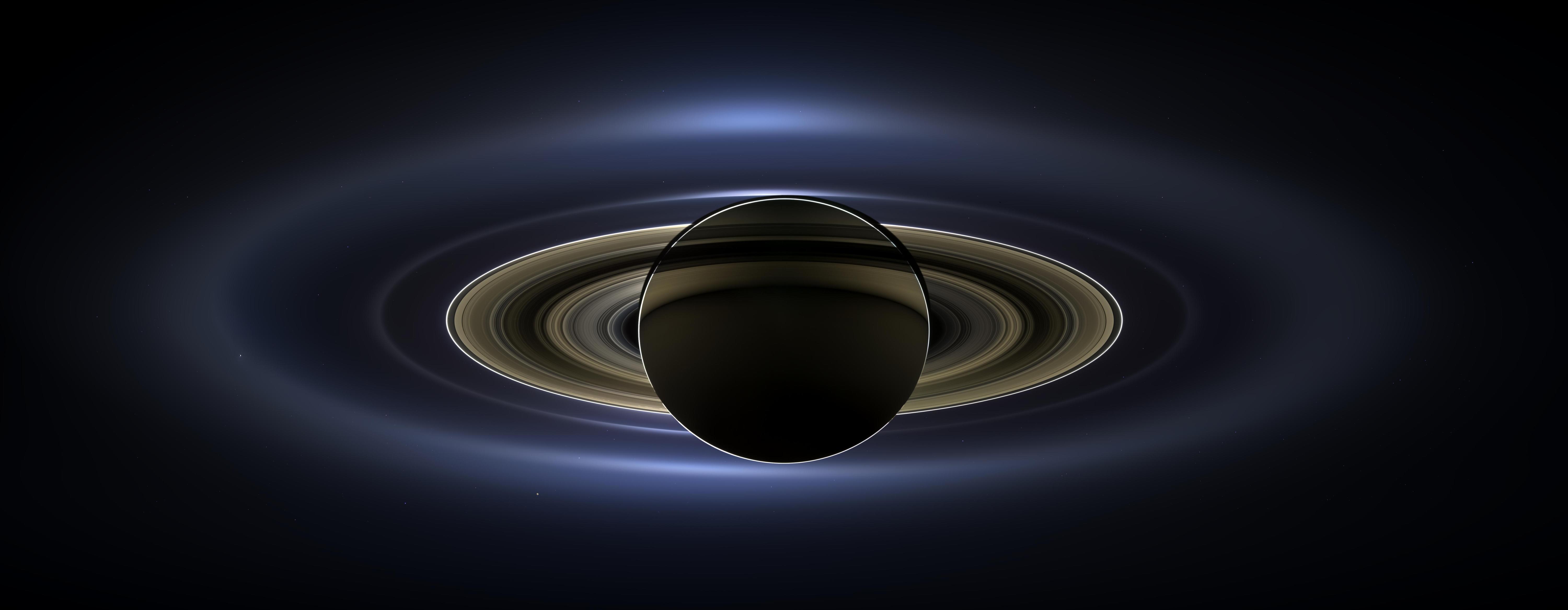Department of Earth Sciences
Service Navigation
Composition of Saturn’s Rings and Mineral Dust at Saturn
The dynamical and compositional characterization of Saturn's ring system is a prime goal of the Cosmic Dust Analyzer (CDA), on-board the Cassini spacecraft. The outermost large and diffuse E ring is very easy to access because Cassini flies through it on most of its orbits about Saturn. Our in situ analysis provides insights into dynamics and composition not achievable by other methods (like cameras). However, Saturn's main rings can also be investigated: In the years 2016 and 2017 Cassini frequently dived through the small gap between the inner edge of the ring system and Saturn's upper atmosphere, allowing for compositional in situ measurements of debris particles emitted from the main rings.
The CDA was developed by scientists from the German Aerospace Centre (DLR), the Max Planck Institute for Nuclear Physics in Heidelberg and the University of Kent, Canterbury campus (United Kingdom). DLR and ESA support the operation of this instrument. Project leader is PD Dr. Ralf Srama from the Cosmic Dust Group at the University of Stuttgart. Prof. Mario Trieloff from Heidelberg University and Prof. Frank Postberg, the head of our research group at FU Berlin, direct the chemical analyses.
In collaboration with ESA, we started a project to explore exogenic mineral dust that CDA detects and that does not stem from Saturn’s ring system. The goal is to perform the complete mapping of the composition of these non-icy micro-meteoroids within the Saturnian system, and to relate the compositional information to the grains dynamics, such as to constrain the properties of their parent bodies. It is likely that we will find several dynamical and compositional independent populations with more than one origin. It might be that some particles have parent bodies inside the Saturnian system while others are captured from the outside (e.g. collisional debris from the Kuiper belt or active Trans Neptunian Objects and Centaurs) or are dust grains just crossing the Saturn’s hill sphere without being captured (like the interstellar dust component). In any case, the dust grains are indirect probes of these sources and any identification of a source can be combined with a compositional analysis by the time-of-flight (TOF) mass spectra.
Saturn’s ring system in all its beauty as seen by the Cassini-Huygens spacecraft. The sun stands behind the giant planet and illuminates the ring system 'from behind'. Outside the dense main rings the thin band of the G ring and the diffuse
outermost ring of Saturn, the huge E ring, can be seen. The 141 images used for this mosaic were captured on July 19, 2013.
Participants in the Dust at Saturn project
